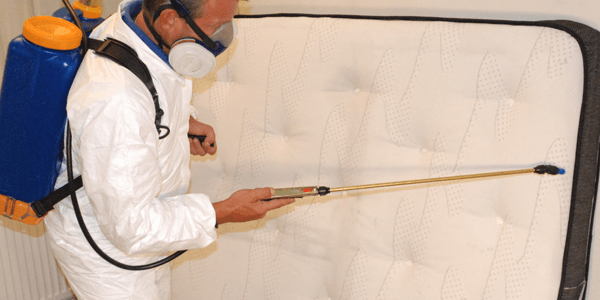
Bed Bug Exterminator
(21,044 projects)
Most pest control professionals offer monthly or quarterly general pest control services that includes treatment for a number of different pests such as:
The first application can run an average of $50-$300 and includes spraying the interior of a house (focusing on baseboards and under cabinets) as well as spraying around the exterior of the foundation. After the initial application, most companies charge $25-$60 for monthly treatments.
Back to top
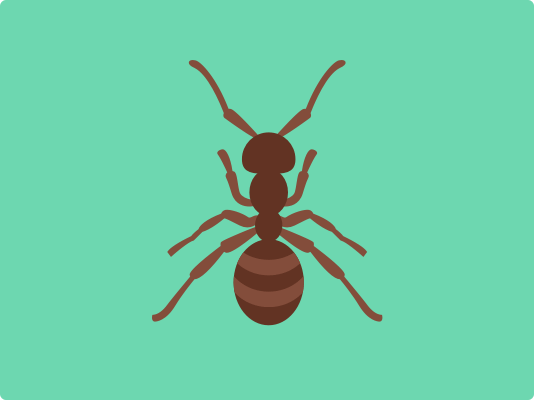 Ants are common pests that are found in many homes. They enter through small crevices, open doors or windows, or even cracks in the sealing around doors and windows. If you see an ant in your home, it is looking for food. If they find some, they then leave a pheromone trail that is invisible to the human eye but allows other ants to find the food source (1). While there are more than 10,000 species of ant all over the world (2), there are six common types of ants that you should be able to identify:
Ants are common pests that are found in many homes. They enter through small crevices, open doors or windows, or even cracks in the sealing around doors and windows. If you see an ant in your home, it is looking for food. If they find some, they then leave a pheromone trail that is invisible to the human eye but allows other ants to find the food source (1). While there are more than 10,000 species of ant all over the world (2), there are six common types of ants that you should be able to identify:
Odorous House Ants
Argentine Ants
Carpenter Ants
Fire Ants
Little Black Ants
To prevent ants from getting into your home, make sure all of your doors and windows are sealed properly and check for cracks in your foundation. If you already have ants in your home, knowing the type of ant will help ant control professionals choose the best treatment for getting rid of them since some treatments will not work on fire ants or carpenter ants. On average, the cost for ant extermination is $250.
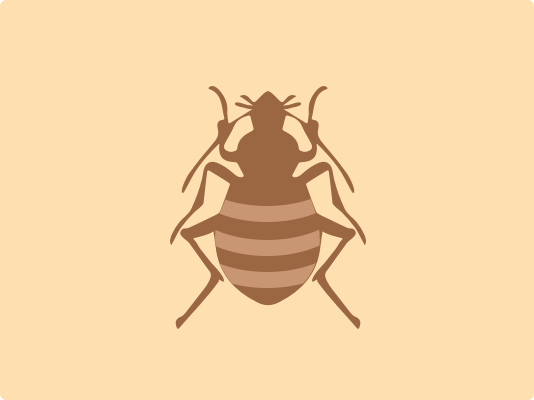 It's a common misconception that bed bugs are only found in dirty, unsanitary conditions. Bed bugs can be found in the cleanest of places as long as there is a food source available. They feed on blood and tend to feed at night which is why they're usually found in beds and well-used pieces of furniture where people spend most of their nights. While bed bugs aren't known to transmit diseases (3), they can leave itchy bite marks and cause stress and trouble sleeping. However, since not everyone reacts to bites the same, some people may be bitten without knowing it. The only true way to know if you have bed bugs in your home is to look for them and find live bed bugs. If you do find a bed bug, call a professional right away. Getting rid of bed bugs requires an experienced hand as most DIY solutions won't be able to get rid of all of the bed bugs.
It's a common misconception that bed bugs are only found in dirty, unsanitary conditions. Bed bugs can be found in the cleanest of places as long as there is a food source available. They feed on blood and tend to feed at night which is why they're usually found in beds and well-used pieces of furniture where people spend most of their nights. While bed bugs aren't known to transmit diseases (3), they can leave itchy bite marks and cause stress and trouble sleeping. However, since not everyone reacts to bites the same, some people may be bitten without knowing it. The only true way to know if you have bed bugs in your home is to look for them and find live bed bugs. If you do find a bed bug, call a professional right away. Getting rid of bed bugs requires an experienced hand as most DIY solutions won't be able to get rid of all of the bed bugs.
There are ways to prevent getting a bed bug infestation in the first place:
If you do find yourself with an infestation of bed bugs, the best way to deal with it is to hire a professional to make sure the right treatment is used. Depending on the treatment chosen, the cost could be anywhere from $500-$1,500 which most companies charging $250-$900 per room treated.
Back to top
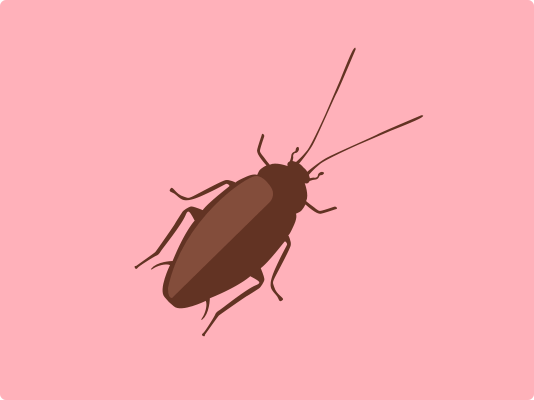 It's happened to everyone - you flick on the bathroom light at night and see something scurry for a hiding place. A cockroach. Some people are genuinely terrified of cockroaches just like some people are terrified of spiders. According to the CDC, cockroaches can cause emotional or psychological distress in some individuals (4), especially since they are incredibly hardy and cockroach treatment requires extensive knowledge and experience.
It's happened to everyone - you flick on the bathroom light at night and see something scurry for a hiding place. A cockroach. Some people are genuinely terrified of cockroaches just like some people are terrified of spiders. According to the CDC, cockroaches can cause emotional or psychological distress in some individuals (4), especially since they are incredibly hardy and cockroach treatment requires extensive knowledge and experience.
While many people believe that cockroaches carry and transmit diseases, this has never been proven to be true. What is true is that cockroaches and their droppings can trigger allergy and asthma attacks in those who are allergic to them. In fact, the National Pest Management Association estimates that 63% of homes in the US contain allergens associated with cockroaches (5). This means that getting rid of cockroaches is imperative to everyone and especially to those who are allergic. The cost of cockroach treatment depends on a number of factors, but it usually ranges between $100-$400.
Back to top
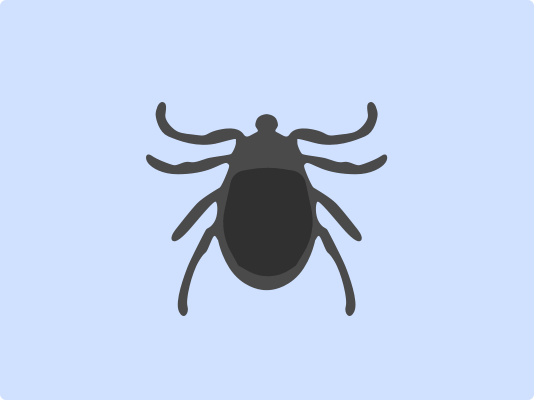 If you own pets, you've probably had to deal with fleas. Most of the time, they're simply a nuisance, but fleas can transmit devastating diseases such as the bubonic plague (6), murine typhus, tapeworms, and cat scratch fever to animals and humans alike (7). That's why year-round preventative treatments for your pets is crucial. Most people think that their pets are safe from fleas during the colder seasons, but pets can pick up fleas any time of year. There are a few different types of flea control treatments such as:
If you own pets, you've probably had to deal with fleas. Most of the time, they're simply a nuisance, but fleas can transmit devastating diseases such as the bubonic plague (6), murine typhus, tapeworms, and cat scratch fever to animals and humans alike (7). That's why year-round preventative treatments for your pets is crucial. Most people think that their pets are safe from fleas during the colder seasons, but pets can pick up fleas any time of year. There are a few different types of flea control treatments such as:
Talk to your veterinarian to discuss the different types of treatments and find one that works with your pet and your lifestyle.
Fleas reproduce quickly and as such, an infestation can occur easily. Simply treating your pets will not get rid of a flea infestation if you already have one. Fleas typically lay eggs on the pet, but since those eggs do not stick to the pet's fur or skin, they fall off, usually onto carpeting or the pet's bed. Sprinkling borax, salt, or diatomaceous earth onto the carpet before vacuuming can help get rid of fleas, and pet beds and bedding should be washed regularly to help prevent an infestation. However, since fleas live outside as well as indoors, treating your yard is also a necessity. The cost of having a professional treat your home and yard for fleas ranges between $100 and $300 and most likely will require a second treatment two weeks after the first to get all the fleas.
Back to top
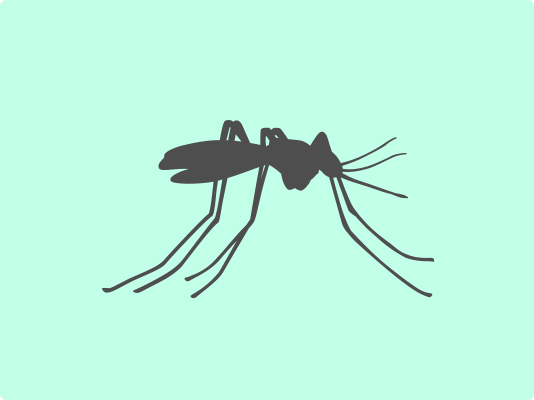 Everyone deals with mosquitoes, especially during the warmer seasons, and it's no secret that mosquitoes can transmit deadly diseases like the West Nile virus, encephalitis, and the Zika virus. However, there are many other diseases that can be transmitted by mosquitoes, which is why mosquito control is so necessary. Unfortunately, since mosquitoes lay their eggs on top of standing water, treating large areas of water such as ponds and lakes require a community-wide effort rather than the work of one person. Most cities or counties already have some form of mosquito control in place, but there are certainly steps you can take to minimize the amount of mosquitoes around your own home (8).
Everyone deals with mosquitoes, especially during the warmer seasons, and it's no secret that mosquitoes can transmit deadly diseases like the West Nile virus, encephalitis, and the Zika virus. However, there are many other diseases that can be transmitted by mosquitoes, which is why mosquito control is so necessary. Unfortunately, since mosquitoes lay their eggs on top of standing water, treating large areas of water such as ponds and lakes require a community-wide effort rather than the work of one person. Most cities or counties already have some form of mosquito control in place, but there are certainly steps you can take to minimize the amount of mosquitoes around your own home (8).
If you still have a problem with mosquitoes after taking all of those steps, consider hiring a professional to treat your yard. Professional mosquito treatment services cost roughly $150-$300 for a one-time treatment and anywhere from $300-$1000 or more for seasonal treatments.
Back to topOrganic mosquito control does not use harmful chemicals, making it safer for pets, children, and adults. There are many different types of organic mosquito control options available, though some have not been approved by the EPA (9). Some of these organic options only repel mosquitoes rather than exterminate them in all stages of life, so be sure to ask your professional exactly what type of organic product they plan on using. You can also add certain plants to your garden to help keep away mosquitoes.
Back to top
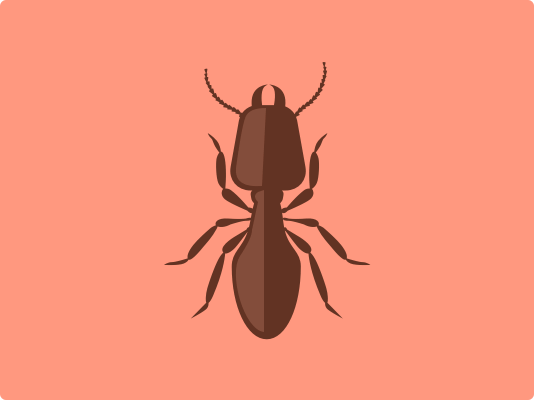 Often thought of nature's cleanup crew for dead wood, unfortunately termites also affect homeowners' property. This invasive species can't tell the difference between trees and pressure treated lumber. Termites are known as the "silent destroyers" because of their ability to chew through wood undetected. Every year termites cause $5 million in property damage (10). Not only do they damage the wood in your home, they can also burrow through filtration systems, paper, insulation, books, and even swimming pool liners (11).
Often thought of nature's cleanup crew for dead wood, unfortunately termites also affect homeowners' property. This invasive species can't tell the difference between trees and pressure treated lumber. Termites are known as the "silent destroyers" because of their ability to chew through wood undetected. Every year termites cause $5 million in property damage (10). Not only do they damage the wood in your home, they can also burrow through filtration systems, paper, insulation, books, and even swimming pool liners (11).
Sometimes the best offence is a good defence. Professional termite control can help stop a problem before it starts. Essentially this revolves around making sure your property is termite resistant. There are several things you can do, including:
Searching for signs of an infestation is equally as important. Should you ever suspect a termite problem, call a professional as soon as possible. Termites are the epitome of small problems turning into big problems. A typical inspection for an average sized home may cost between $70 - $110 dollars. So if you notice any of the following signs around your home, call in for an exterminator:
Once discovered, action is needed to take out the termite threat. Termite treatment generally consists of liquid and sometimes gas fors of pesticide specifically geared towards termites, known as Termiticide. Termiticide comes in repellent and non-repellent forms (12). This is to ensure that a greater transfer rate is maintained when the termites are delivering the toxin back to the nest. Lower repellant Termiticide offers a better transfer rate, which will wipe out the colony more efficiently. Because chemical treatment is by the linear foot rather than sq. ft. the price range can vary significantly. It's about $5-$17 dollars per linear foot or roughly $1,400 - $1,700 total.
Back to topWhen an entire home is infested with an invasive species, sometimes the best solution is total fumigation. This is common with cockroach infestations, as it's the only way to be sure you got rid of everything (13). Sometimes pre-fumigation services are necessary, which cost $100 or $200 dollars. Otherwise, per foot the cost for an average sized home can run up to $1 to $4 dollars or a grand total of $2,000 - $6,000 for the home.
Back to topThe nature of organic pest control is the idea that you can prevent invasive species and pests using simple organisms. The entire ideas is based around the notion that you can eliminate the habitat for pests while maintaining a healthy yard (14). The core part of this strategy lies in the soil. This will provide resilience for the plant life, which in turn means they can recover from pest damage. This and planting naturally pest resistant plants in the area will go a long way in reducing the insects' effects.
Back to topSometimes there will be a animal problem on your property. This can be a wayward skunk, nosey coyote, or downed bird of prey. According to the Department of Energy and Environmental Affairs quote "No one may be able to destroy wildlife simply because it is on their property." With this in mind, you can always call in a pro for animal removal (15). Depending on the type of animal in question, they may re-release it somewhere else, put it down, or take it into an animal shelter.
Back to top
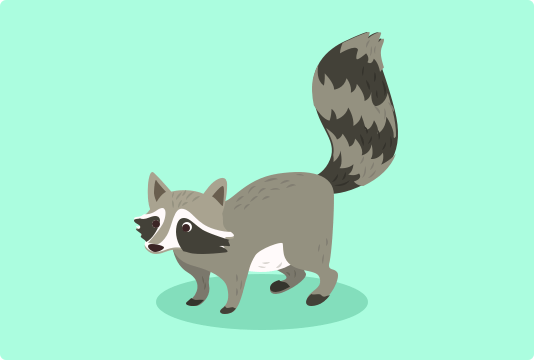 Because raccoons tend to live close to human habitats, it's understandable that they are categorized as pests. While naturally curious, they can tend to cause problems. Every now and then they get into trash cans, attics, and bird feeders (16). To remedy this, call a professional to have the raccoons removed. Both you and the raccoons will be safer. It might cost around $165 - $390 with another fee for each additional raccoon. Also you should never take in raccoons as pets.
Because raccoons tend to live close to human habitats, it's understandable that they are categorized as pests. While naturally curious, they can tend to cause problems. Every now and then they get into trash cans, attics, and bird feeders (16). To remedy this, call a professional to have the raccoons removed. Both you and the raccoons will be safer. It might cost around $165 - $390 with another fee for each additional raccoon. Also you should never take in raccoons as pets.
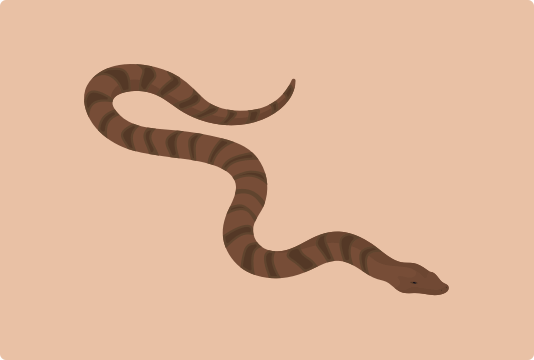 Sometimes there is a snake on your property that is clearly bigger than a garter. If this is the case, or if you suspect that it may be venomous, call in for a snake removal expert. It's not just a pest issue, it's a health and safety issue. Many species can be venomous and snake removal is a necessary service to keep your home safe. A typical removal may cost around $100 - $200 dollars depending on the type of snake and your area.
Sometimes there is a snake on your property that is clearly bigger than a garter. If this is the case, or if you suspect that it may be venomous, call in for a snake removal expert. It's not just a pest issue, it's a health and safety issue. Many species can be venomous and snake removal is a necessary service to keep your home safe. A typical removal may cost around $100 - $200 dollars depending on the type of snake and your area.
Enter service and
zip code to view
cost breakdown